HD television (R.I.) TV)
Roughly all of us have seen the images of the 1992 Olympic Games, but very few would have seen those images on High Definition Television. And it is that it will still take about 10 years until the televisions of our home have this system.
In the following lines we will analyze what High Definition Television is, but we will first know the history of Television that we know.
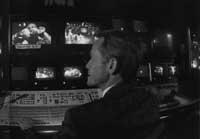
The television system we currently know is the so-called PAL. Features are: It has a resolution of 625 lines, a field frequency of 50Hz, an image ratio of 4/3 and color images.
As in the year 1930 began the first television broadcasts, these characteristics of television have not varied, except the change from black and white to color.
Since the 1930s, the technological goal of television has been to achieve an image quality equivalent to 35 mm film resolution.
In the 1950s the colour was introduced, compatible with the black and white system. To introduce this novelty, a bandwidth change up to 7.5 MHz is performed.
As with the same television one could see a sign of colors, this change did not mean a trauma, neither in domestic television nor in professionals. (It must be said, however, that 15 years after the consolidation of a form of color television).
Although this change was important, television resolution was similar, far from the images of cinema.
In 1968 the Japanese began studies to create a system equivalent to 35 mm of format.
In 1970 Japanese public television NHK presented a new model: Resolution of 1,125 lines, ratio 5/3, frequency 60 Hz and bandwidth 30 MHz.
However, this system does not fit the other current models.
In the 1970s and 1980s, the NHK began using this system. Recording, broadcast and reception teams were prepared. Currently, Japanese HD TV broadcasts 8 hours a day through its satellite.

However, the European companies (Philips, Thompson, Bosch…), faced with the objectives of the Japanese, decided not to accept the new Japanese model at the ICC Assembly meeting in Duvrovnik in 1986.
To devise a new HD TV model in Europe, EVE has created the “Eureka 95” program after four years of delay.
The reason another field was invented was that the Japanese model did not fit the PAL system.
This new European programme has different aspects:
EU 95 is researching production equipment and EU281 on binary flow transmission.
Philips and Bosch have simultaneously created a partnership (BTS) to prepare equipment for the new European model. This new model is characterized by:
1250/50Hz, 16/9 ratio and 30 MHz bandwidth. All these features match the current television model (1,250, which doubles to 625).
Thus, in the late 1990s, things were not very bad in Europe. The Japanese model was already underway, but the Americans have proposed their new model.
The American model is compatible with the NTSC and while the Japanese lose their last chance, the European project will be extended a little longer. It is about fixing the colorimetry, the contrast ratio and the definitive model of image relation.
Current situation
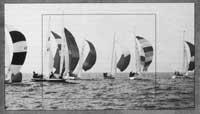
In HD TV we know 3 models that are incompatible with each other.
Japan
This is the best production or production model, but the MUSE transmission system cannot say the same thing (the MUSE transmission system is not really High Definition).
The transfer of the film to video is good and the conversion to European TV in HD. Also, the monitoring tubes are the best.
The teams work in the digital system and in recording the signal is not analog. Equipment usage options are the same as the PAL system.
Europe
Streaming via Mac HD system is better than streaming on MUSE. However, it should be noted that the use of the Dz/HD Mac system for HD TV signal transmission has been left for 1995, i.e. until the digital HDTV guarantee is seen.
Dz Mac is a pre-commissioning model for HD TV. It is not therefore High Definition. Thompson has released the “Dz Mac 16/9 stereo” receiver for 350,000 pesetas. Some say this would be “improved television.”
However, both MUSE and HD Mac are analog systems with digital support. In Europe there are two formats in High Definition Television: Philips and Thomson.
Philips
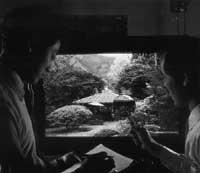
At the moment, the technology of the equipment is analog, but since the magnetoscopes are based on the format 1”B of Bosch, when making copies quality is lost. Therefore, they are thinking of creating digital magnetoscopes.
As it is a small equipment or equipment, the possibility of creation when equating it with the PAL system is less.
Thompson
They use D1 digital equipment by pairs or groups (square system). What is the advantage of this system? Although the camera is specially designed for HD TV, it is possible to use all D1 equipment available on the market. It has been said in a word, with two D1 type magnetoscopes, a splitter and a camera for HDTV. (Here's Thompson's key. And its system does not reach the 1,250 lines, so it is not High Definition).
If we wanted to roll in the PAL system using the same model, it would be enough to use the D1 and the conventional camera. In addition, digital recording does not lose quality in the following generations. According to the current trend, half inch digital systems are dominating.
Unresolved issues in HDTV
It is not worth analyzing why the HD TV signal does not join the current terrestrial network. Because in the process of recording this type of television there are two big problems. Let's analyze two problems with a complex solution:
Focus problem
The approach is really difficult, on the one hand, because this system has a high definition and on the other, the camera wiefinder has very little resolution. Since the camera wiefinder only has 10”, the camera operator is almost impossible to take focus. If there is little light, let's not say.
Let’s look at the difference graphically also in the BH.UM (High Definition Mobile Unit) system on the 39” monitor, sometimes it is not clear what the focused point is. As already indicated, they have not yet found a solution to this problem.
The problem of light
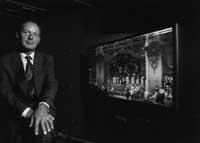
This second big problem seems to be in the process of solution.
In HD TV you need double light in the PAL system. In fact, on the one hand it uses pipes and on the other, the size of the Taiget is larger (1 1/4”). Some experts say it would need double and triple light compared to the PAL system.
This problem arises with the replacement of pipes by CCD/Fit, Hypen Had system, etc. This would be the third generation CD and we must bear in mind that with this system on conventional television you can work with half the necessary light so far. As an example, Matsushita has a 2/3-inch CCD prototype.
HD television at home
Leaving aside the best of these systems or what is going to be used in Europe, let's look at the future of HD TV coming home.
Currently, a monitor of this system exceeds one million pesetas (50,000 pounds). To this should be added the decoder of the satellite signal. The most suitable size or measurement of the monitor is 30” (in the PAL system we have 21”). The audio would have 7 channels, as in the best cinemas.
Consequently, we would need almost the entire room to place the television. The physical space you need has not been taken into account when designing this type of television. While it is a very curious example, in Japan, the most advanced country for High Definition Television, this type of television does not enter through the door of the home.
The most suitable distance to watch this television is 3 meters. In addition, you have to put 7 speakers around, so if you do not have the whole room for it at home you can not buy this type of television.
But if HD TV were compatible with the PAL system monitor we have in our house, this signal would look in two ways (see diagram below).
Next future
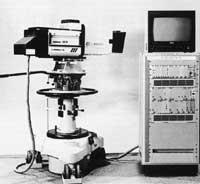
Nowadays it is cheaper to shoot in celluloid, but when prices drop, some cinematographic productions will take place on HDTV. The post-production will be carried out in this system and the projection (not the projection) will be carried out in prepared skins.
However, superproductions will continue to be celluloid. And is that when recovering the format of 70 mm, it is the double resolution of this new type of television.
The entry of this system into our homes will be a little later. And there are still many problems to solve: too high price, excessive supplies, lack of agility, etc.
In addition, we have technical problems with the PAL system, and logically, by needing a comfortable space to watch the TV, we can not remove the armchairs or sofas by the size of the TV.
Finally, I would like to finish this article with an anecdote. Bitor Erice has won an important award in Cannes 92 with “The Sun of Quince”. Part of this film is filmed with the Betacam camera, the PAL system in 625 lines and in the public has hardly realized the reduction of quality. Because it was the story of the film.

JAPANESE: |
1.125/60 |
9/16 |
30MHz |
EUROPEAN: |
1.250/50 |
9/16 |
30MHz |
B.O.E. : |
Information |
9/16 |
Digital system with compatible spectrum. |
Buletina
Bidali zure helbide elektronikoa eta jaso asteroko buletina zure sarrera-ontzian











